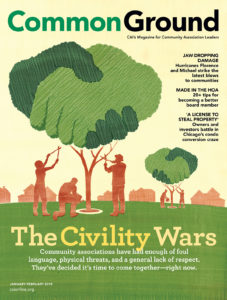The best community associations have knowledgeable governing boards, highly-engaged residents, and educated and trained professional managers leading their communities. CAI has believed that since its founding in 1973, and it’s why we offer information, education, and resources to members and the general public. It’s why we recently launched HOAResources.com, a digital news site for the millions of residents living and working in condominium communities and homeowners associations worldwide.
We recognize that the community association model has evolved and grown up over the years, becoming a well-established and increasingly successful form of community governance and an essential component of the U.S. housing market.
There’s an increasing need to educate, train, and provide the latest news and resources to the millions of potential homebuyers, homeowners, and renters living in these communities. After all, 61 percent of all new housing built for sale is in a community association.
The new site lets CAI members and the general public find practical advice on common issues in the community association housing model. The site will address HOA basics, financial planning, rules and governing documents, as well as security and safety. Many time-tested best practices are showcased on the site, often through free, downloadable documents.
Go to www.HOAResources.com, and share the information with homeowners, friends, and colleagues.
The post Homeowner education: Be resourceful with CAI’s HOAResources.com appeared first on Ungated: Community Associations Institute Blog.






